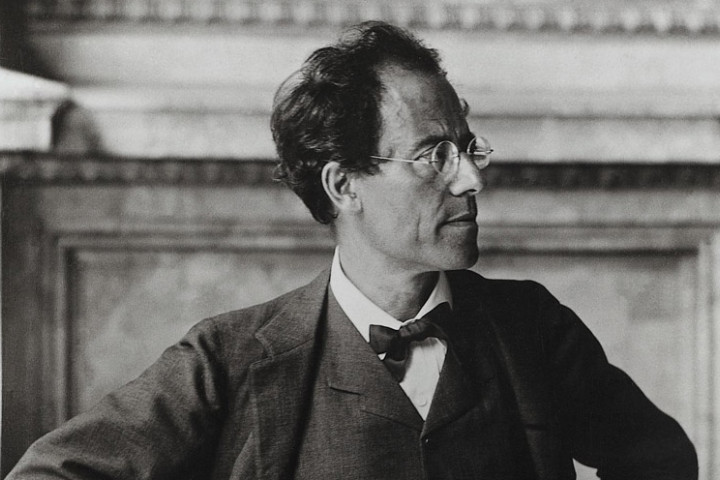Gustav Mahler’s Symphony No. 5, composed between 1901 and 1902, is a defining work of the Austro-Bohemian composer, rich with intensity, emotional depth, and innovation. This symphony marks a turning point in Mahler’s musical journey, as well as in his personal life, during a period of profound change and renewal.
A New Phase in Mahler’s Life
The story of Mahler’s Fifth Symphony begins in the summer of 1901, when the composer was recovering from a life-threatening hemorrhage. Confronted by his own mortality, Mahler experienced an intense period of introspection. At the same time, his personal life took a dramatic turn for the better. He met and fell deeply in love with Alma Schindler, a talented composer and pianist, whom he would marry in 1902. These experiences, both somber and joyful, found their way into the complex emotional landscape of the Fifth Symphony.
Structural Innovation
Unlike his earlier symphonies, which were heavily influenced by song and featured vocal lines, Symphony No. 5 is a purely instrumental work. Mahler’s Fifth is divided into five movements grouped into three parts, creating a form that is both unique and ambitious. The structure can be seen as a progression from darkness to light, with each movement exploring contrasting moods and themes.
- Trauermarsch (Funeral March): The symphony opens with a solemn trumpet solo, setting a tragic, almost militaristic tone. This opening march embodies the specter of death, a reflection of Mahler’s own brush with mortality and his musings on life and loss. The music here is brooding, intensely personal, and marked by dissonant harmonies.
- Stürmisch bewegt, mit größter Vehemenz (Stormy, with the greatest vehemence): Following the funeral march, the second movement explodes with raw energy and turmoil. Here, Mahler unleashes a musical storm filled with rapid contrasts, capturing the turbulence and intensity of life’s struggles. This movement ultimately reaches a moment of triumph, signaling a shift toward hope and vitality.
- Scherzo: The third movement is a lively, almost rustic Scherzo. Marking the central point of the symphony, this dance-like piece expresses a sense of joy and liberation. It’s believed to reflect Mahler’s newfound happiness with Alma, serving as a breath of fresh air after the intensity of the previous movements.
- Adagietto: The fourth movement, often regarded as the heart of the symphony, is the famous Adagietto, a love letter to Alma. Scored only for strings and harp, it is delicate and intimate, expressing Mahler’s deepest affection in a movement that has become one of the most beloved in classical music. This piece has a meditative quality, symbolizing peace, love, and tenderness.
- Rondo-Finale: The symphony concludes with a jubilant Rondo-Finale, celebrating the triumph of life and joy. This final movement is marked by its playful energy and sense of release, reflecting Mahler’s embrace of life after the profound experiences of the preceding movements. The Rondo serves as a conclusion to the symphony’s journey from darkness to light, ultimately closing on a note of exuberance and optimism.
A Lasting Legacy
Symphony No. 5 is one of Mahler’s most popular and influential works, resonating with listeners through its wide emotional range and bold musical language. Though initially met with mixed reactions, the symphony has come to be regarded as a masterpiece, a testament to Mahler’s genius and a deeply personal expression of his inner world.
Today, Mahler’s Symphony No. 5 stands as a monumental work, celebrated for its complexity, emotional depth, and the way it uniquely reflects the highs and lows of human experience. For both Mahler aficionados and newcomers, it offers a glimpse into the soul of one of music’s greatest composers, whose works continue to captivate audiences around the world.


Comments are closed